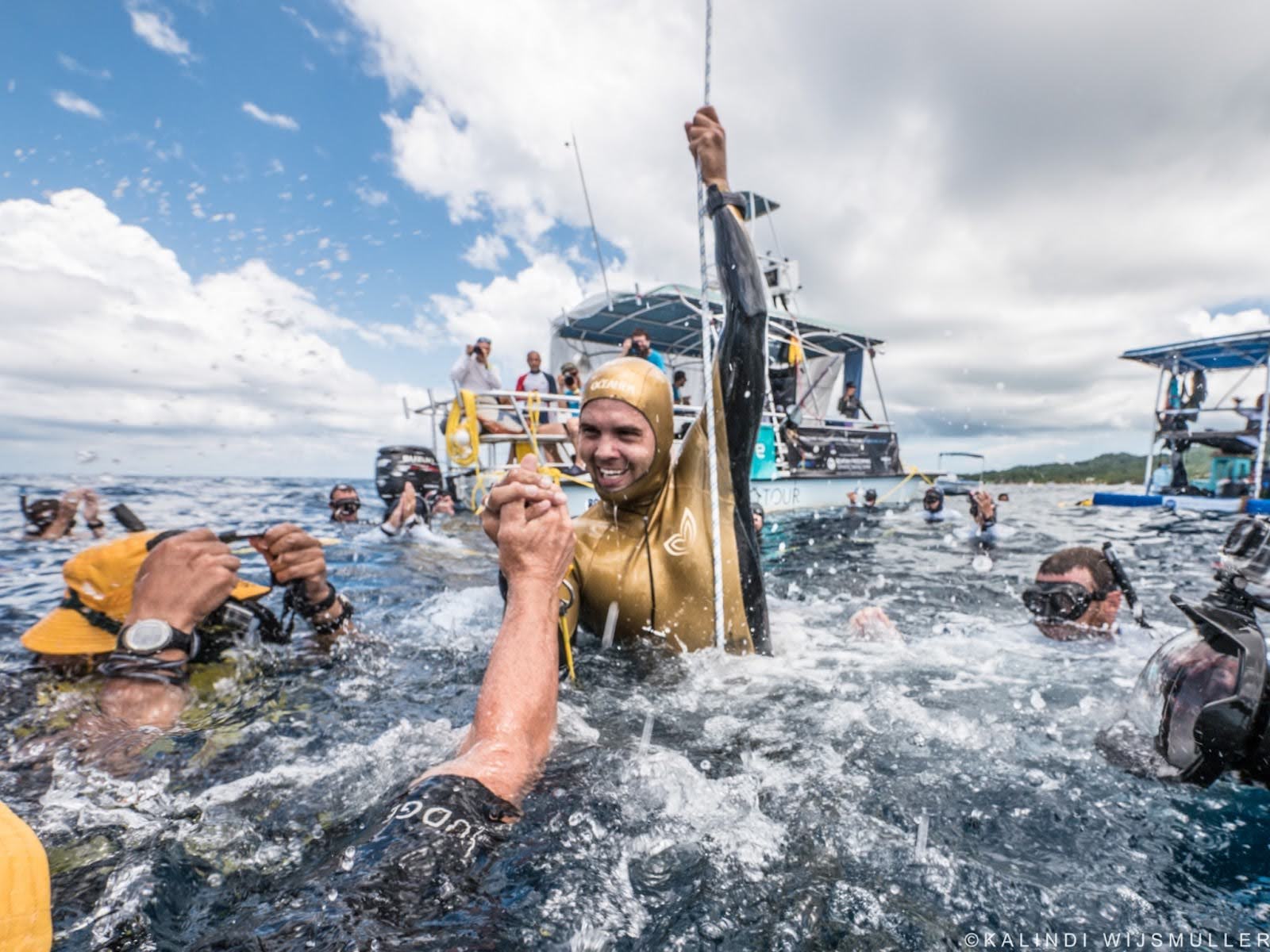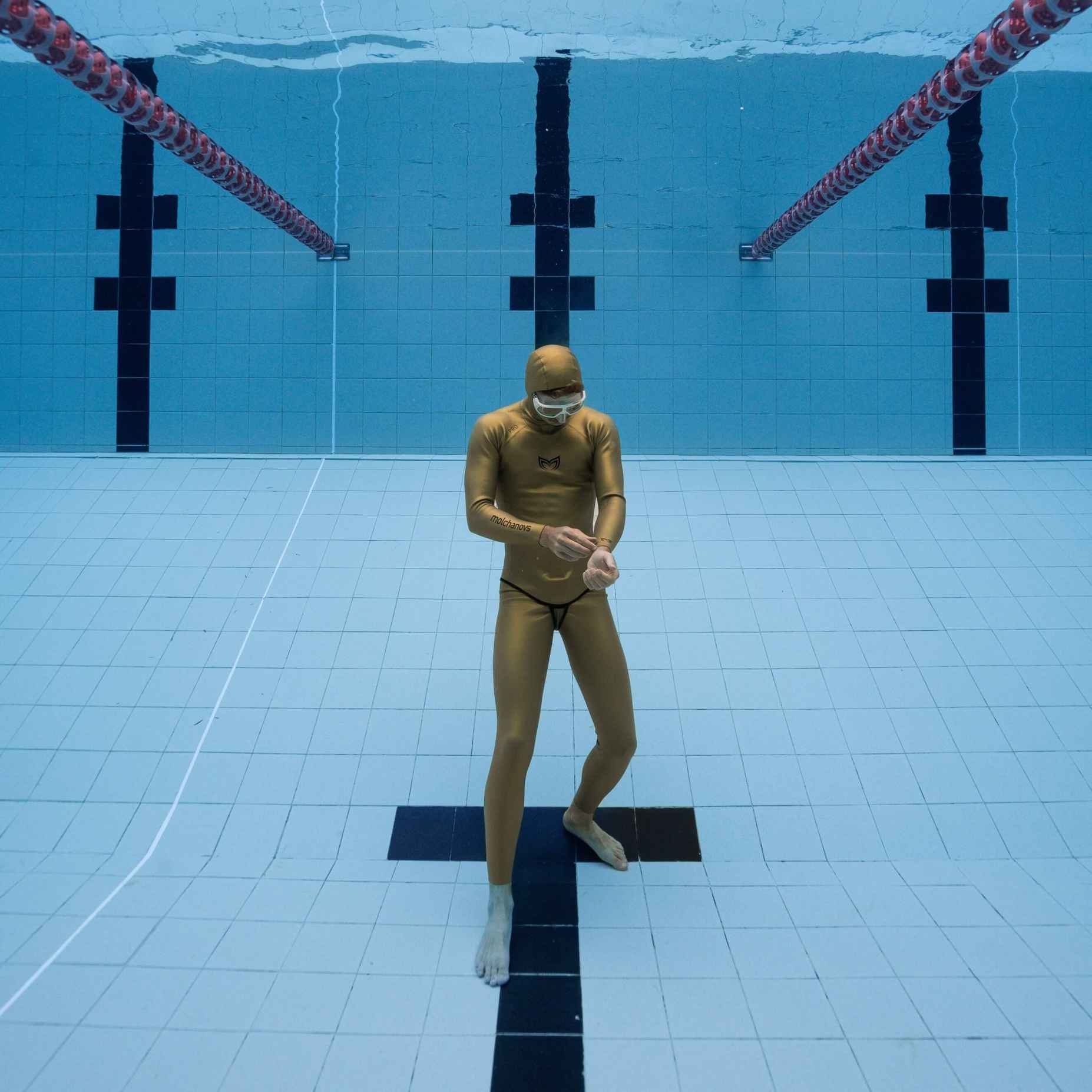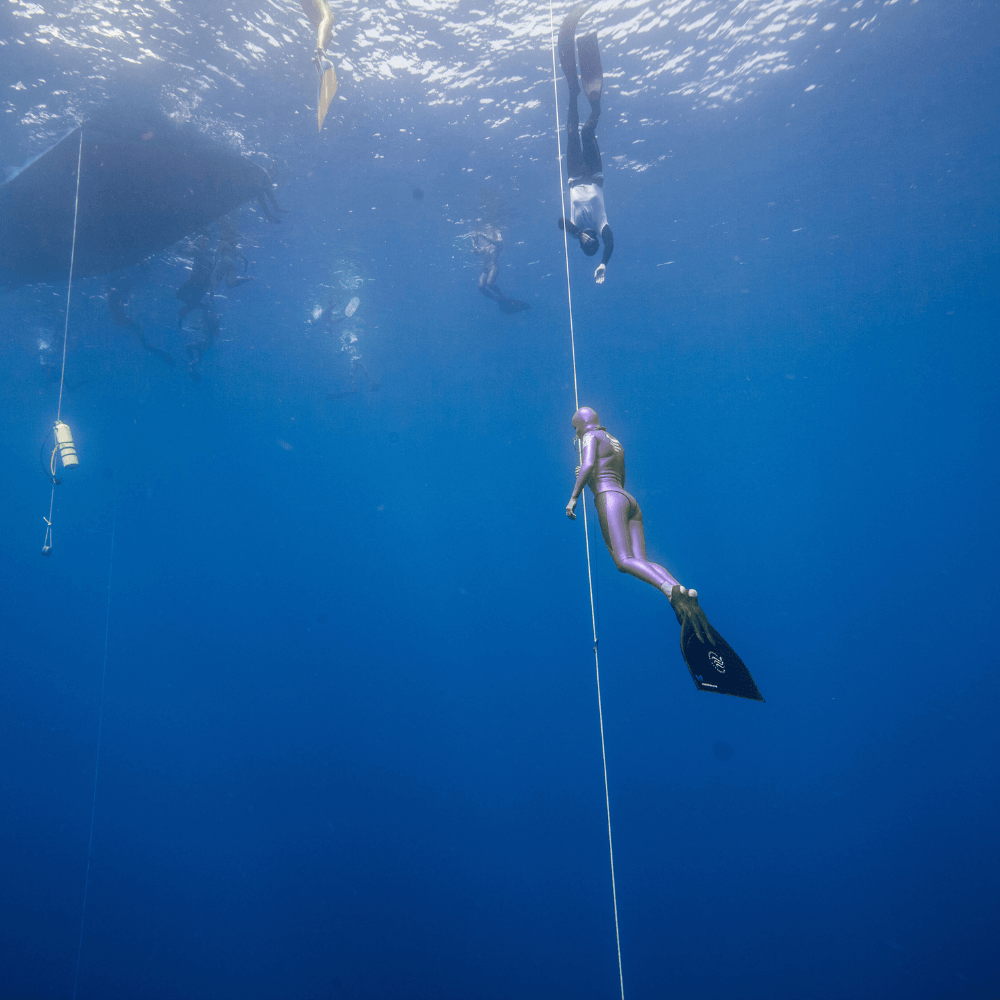Redefining Limits: The Competitive Disciplines Of Depth Freediving

From competitive freediving’s humble beginnings in 1949 to the jaw-dropping depths athletes are reaching 75 years later: six depth disciplines have emerged to test every aspect of freediving technique.
By Kristina Zvaritch
Photo: © @_kalindi
In 1949, Italian Air Force captain and spearfisher Raimondo Bucher made a bet that he could dive down 30m (98ft) in the waters of Napoli, Italy — a depth scientists predicted would crush his lungs. To their surprise, he arrived back to the surface safe and sound, walking away with 50,000 lire weighing heavy in his pockets and the first official freediving depth record in his name. And just like that, modern-day competitive freediving was born.
Today, there are two main freediving record-governing bodies that organize pool and depth competitions, set safety standards, and keep track of official records: AIDA (International Association for the Development of Apnea) and CMAS (World Underwater Federation). As the sport developed, different disciplines were created for each unique style of diving to depth. Let’s jump in!
Depth Freediving Disciplines
Free Immersion (FIM)
 Thibault Guignes heading to 110m (361ft) of depth in FIM. Photo © @fed.under.water.
Thibault Guignes heading to 110m (361ft) of depth in FIM. Photo © @fed.under.water.
Free Immersion (FIM) involves a freediver pulling themselves down and up a dive line. This is one of the easier disciplines for athletes to train since it does not require specialized equipment like a monofin or bifins — but don’t make the mistake of thinking the discipline itself is easy! You can only go so fast on a FIM dive (athletes aim for 1m/s), which means very deep dives equal very long dive times. For example, when World Champion Alexey Molchanov dove to 133m (436ft) deep in FIM, it took him a mind-blowing 4 minutes and 42 seconds.
Women’s world records in this discipline have inched slowly to 100m+ (328ft) over the last few years with performances from Sanda Delija and Alessia Zecchini, while men like Petar Klovar, Alexey Molchanov, and Mateusz Malina made great leaps between records to over 130m (427ft).
Constant Weight With Fins (CWT)
Constant Weight with Fins (CWT) is the deepest competitive freediving depth discipline. Athletes propel themselves down and up a dive line using a monofin; however, bifins are also allowed. Monofins, with their large surface area, give athletes tons of propulsion with the right technique, making them look more dolphin than human. The records are mind-blowing, and the spread between male and female records isn't as large as you’d expect.
Men's world records surpass 135m (443ft), a discipline largely dominated by Alexey Molchanov. Women's world records exceed 122m (400ft), with mainly Alenka Artnik and Alessia Zecchini competing for the deepest dives.
Constant Weight With Bifins (CWT / CWT-BF)
 Alexey Molchanov competing in CWTB with the PRO Hyper Bifins Carbon at the 2024 CMAS 8th World Championship Freediving Depth Greece. Photo © @andac.kazar.
Alexey Molchanov competing in CWTB with the PRO Hyper Bifins Carbon at the 2024 CMAS 8th World Championship Freediving Depth Greece. Photo © @andac.kazar.
Constant Weight with Bifins (CWT) sees athletes diving down and up a dive line using bifins paired with a flutter kick technique. This is technically a “newer” discipline as AIDA has only recognized it since 2019, while CMAS introduced the discipline in 2015. Before it became an official discipline, athletes had the option of using bifins for CWT, but were easily outstripped by those wearing monofins. It may be tempting for freedivers to also use a dolphin kick or two at depth or when their legs tire, but it’s strictly prohibited in CWTB.
The men’s records included a thrilling rivalry between athletes Alexey Molchanov and Arnaud Jerald, who were setting one record after another in CWTB — which is now over 124m (407ft). We also witnessed a similar battle between Alenka Artnik and Alessia Zecchini for a period of time, diving 110m+ (361ft) in the discipline.
Constant Weight Without Fins (CNF)
Constant Weight without Fins (CNF) is considered the hardest discipline to go deep in, as it involves freedivers diving down and up a line using only arm strokes and leg kicks — the only contact made with the rope is to grab it is within the candy cane zone (the final 3m / 10ft), where athletes can grab or pull on the line. CNF requires exceptional flexibility to maximize every stroke and kick. Athletes must also adapt well to pressure, as they need upper body strength at the deepest part of the dive where their lungs are most compressed.
The last seven women’s CNF world records were set by Kateryna Sadurska over a period of two years (now over 82m / 269ft). The men’s world record of 102m (334 ft) CNF, set by William Trubridge and stood unbroken for nine years, only recently was toppled by Petar Klovar with a dive to 103m (337ft)
Variable Weight (VWT)
In Variable Weight (VWT), an athlete descends feet-first down a line on a weighted sled and ascends back up the line using either bifins, a monofin, or FIM. Since athletes save energy on the descent and can equalize easier in a head-up position, deeper depths are within reach. AIDA stopped acknowledging VWT as a competitive discipline due to safety concerns. However, they still recognize records made in organized attempts outside of competition. CMAS still recognizes the discipline in competition.
The men’s record stands at over 155m (509ft), while the women’s world record has reached 130m (427ft).
No Limits (NLT)
No Limits (NLT) is the deepest freediving discipline, but is also considered the most dangerous. Athletes descend with a weighted sled feet-first down a line, and ascend from the bottom typically using a balloon filled with air from a scuba tank. With minimal energy expenditure required, freedivers can reach massive depths. They focus solely on perfecting equalization technique and relaxing into the extreme atmospheric pressure. In 2015, AIDA completely stopped sanctioning any attempts in NLT due to the inherent risks that come with the discipline.
The women’s world record stands at 160m (525ft), while the men’s final world record remains at 214m (702ft).
Ready For Depth?
 A student practices equalization on a FIM dive. Photo © @akivis.
A student practices equalization on a FIM dive. Photo © @akivis.
Each depth freediving discipline comes with its own techniques, challenges, and extraordinary records. Whether you want a technical challenge with CNF or to dive like a dolphin with CWT, there’s always something new and exciting to explore. To learn how to perform each movement effectively and progress safely, however, it’s important to train under a certified freediving instructor. Molchanovs Wave courses are the only freediving courses that include all depth disciplines, while the Wave 4 – Competitive Freediving course is the only course of its kind designed to prepare you as an amateur athlete. Find an instructor near you to take the plunge into depth training!
But remember, your safety is the number one priority in freediving — never dive alone, only with a certified buddy.
Ready to dive deeper into the world of freediving? Subscribe to our newsletter for the latest news and insights into the competitive part of freediving.




Leave a comment